Floor Cleaning and Care

How to clean and care for your floor.
Alcoholic Beverage Stains on Hard Surface Floors
Rub with a cloth dampened in a solution of detergent and warm water. If the stain remains, rub it with a different cloth dampened with denatured alcohol.
Asphalt Tile – Care and Cleaning
Care
Very hard, brittle tile, installed mostly in older buildings. Softened by grease so wipe up spills promptly. Also softened/dissolved by solvents, so do not use solvents, or solvent-based polishing waxes on it.
Cleaning
Asphalt tile is not damaged by alkali, so can you use alkaline cleaners on it. Damp mop as recommended for vinyl. When soil is not removed by damp-mopping, wash with detergent and water, or mild ammonia and water solution, and rinse well. Wax only with water-based wax.
Blood Stains on Hard Surface Floors
Mop or sponge with clear, cold water. If the stain remains, mop or sponge it with a solution of ammonia and cold water.
Cautions : When working with any chemicals, carefully read and follow the label directions for using that chemical, especially any cautions on safe use! With solvents, be very careful to have ventilation, and no flame or spark in area!
The first time you use any procedure on any floor, test it first on an out-of-the-way part of the floor to be sure it does not damage the flooring or finish.
Notes : If steel wool is suggested, use fine grade, 000 grade. Scouring powder will help remove many stains, but can also permanently scratch the floor.
If you decide to use it, use only a mild type, and be very careful about rubbing too much. Concentrated liquid commercial household cleaners, rubbed onto a stubborn spot, may remove it as well as scouring powders without the danger of scratching. Rinse off well. Do not use on wood floors.
Do not use water solutions, or cleaners which have to be rinsed off with water, on wood floors. Use a solvent or solvent-based cleaning wax.
After removing a stain, rinse the area thoroughly, dry completely, and, if floor finish has been removed in that area, recoat with appropriate finish or wax.
Candle Wax or Chewing Gum on Hard Surface Floors
Freeze the material to brittleness by using ice cubes. Then scrape the material off the floor with a plastic spatula.
Cautions : When working with any chemicals, carefully read and follow the label directions for using that chemical, especially any cautions on safe use! With solvents, be very careful to have ventilation, and no flame or spark in area!
The first time you use any procedure on any floor, test it first on an out-of-the-way part of the floor to be sure it does not damage the flooring or finish.
Notes : If steel wool is suggested, use fine grade, 000 grade.
Scouring powder will help remove many stains, but can also permanently scratch the floor. If you decide to use it, use only a mild type, and be very careful about rubbing too much.
Concentrated liquid commercial household cleaners, rubbed onto a stubborn spot, may remove it as well as scouring powders without the danger of scratching. Rinse off well. Do not use on wood floors.
Do not use water solutions, or cleaners which have to be rinsed off with water, on wood floors. Use a solvent or solvent-based cleaning wax.
After removing a stain, rinse the area thoroughly, dry completely, and, if floor finish has been removed in that area, recoat with appropriate finish or wax.
Vinegar – Floor Cleaning Methods
Candy Stains on Hard Surface Floors
Rub with a cloth dampened in detergent and warm water. For abrasive action, use steel wool instead of a cloth except on “no wax”, or hard-surface floors. On them use powdered detergent and a plastic scrubbing pad dampened with warm water.
Cautions : When working with any chemicals, carefully read and follow the label directions for using that chemical, especially any cautions on safe use! With solvents, be very careful to have ventilation, and no flame or spark in area!
The first time you use any procedure on any floor, test it first on an out-of-the-way part of the floor to be sure it does not damage the flooring or finish.
Notes: If steel wool is suggested, use fine grade, 000 grade.
Scouring powder will help remove many stains, but can also permanently scratch the floor. If you decide to use it, use only a mild type, and be very careful about rubbing too much.
Concentrated liquid commercial household cleaners, rubbed onto a stubborn spot, may remove it as well as scouring powders without the danger of scratching. Rinse off well. Do not use on wood floors.
Do not use water solutions, or cleaners which have to be rinsed off with water, on wood floors. Use a solvent or solvent-based cleaning wax.
After removing a stain, rinse the area thoroughly, dry completely, and, if floor finish has been removed in that area, recoat with appropriate finish or wax.
Wood Flooring for Pet Owners
Concrete, Cement – Grease Stains
In a garage, it is advisable to place a shallow metal pan under the car to catch dripping oil. Spreading the area under the car with sand or sawdust will help absorb dripping oil. Periodically saturated sand or sawdust should be scraped away and fresh, clean material put in place. This will prevent tracking oil to other areas of cement or into the house.
If oil or grease is spilled on porch or patio cement, apply an absorbent powder such as fuller’s earth, cornmeal, or sawdust to absorb as much oil as possible immediately. Leave it on stain for a few hours and sweep up.
To remove the grease stain:
1. Using a stiff long handled brush, scrub stain with concentrated detergent suds. Rinse well with hose. Dry and repeat if necessary.
2. Sprinkle “dishwasher” detergent (dry) on wet concrete. Let it stand a few minutes; pour boiling water on area. Scrub and rinse. Use rubber gloves on hands.
3. Commercial Product: One brand is Garage and Driveway Cleaner by Red Devil Co. available in paint or/and hardware stores. It can also be used on blacktop surfaces. Other similar brands may be available in your area.
4. On wet oily surface of concrete, sprinkle with trisodium phosphate. Allow to stand 15 to 30 minutes, then scrub with stiff brush and hot water. Rinse with clean water. Do not use on asphalt.
OR: Dissolve a cup trisodium of phosphate in 1 gallon of hot water. Pour over stained cement surface generously and allow to soak 15 to 20 minutes. Scrub vigorously with stiff brush or broom. Rinse off with hose. Repeat if necessary. Do not use on asphalt.
5. Scrub the concrete with a grease solvent to remove as much as possible of the grease stain. Have good ventilation and avoid spark or flame as solvents are flammable. Benzine, often recommended, can ignite, just from a spark from friction or rubbing.
6. Mix 1 part sodium citrate to 6 parts water and 6 parts glycerine and add enough whiting or fuller’s earth to make a thick paste. Spread paste on oil or grease stain. Let stand 1 week. Add new paste when it dries. Flush with water after brushing dry paste away. Repeat if necessary.
Rushes, Grass Rugs – Care and Cleaning Care
Natural fiber rugs are made of rushes and grasses. Fiber rugs should only be used in dry areas. They should not be put on patios, open porches or damp basements since moisture can cause deterioration. Coarsely woven natural rugs serve as durable floor rugs, but lacily woven types made of delicate fibers should be used as wall hangings.
Cleaning
Natural fibers do not attract much dirt because they are antistatic. Any dirt trapped in the fibers can be removed with the floor brush attachment of a vacuum cleaner. A fiber rug can be cleaned with detergent and water. To do this, take the rug outdoors. Dip a brush in a detergent solution to clean the entire surface; rinse with a hose. Hang the rug over a clothesline in the sun. Be sure it dries quickly and completely. Damp, natural fiber rugs will mildew and eventually disintegrate.
Tar on Hard Surface Floors
To remove tar, freeze it to brittleness with ice cubes and then scrape it off with a plastic spatula. To remove the tar stain, wipe with a cloth dampened with either a dry cleaning solvent or a formulated safety solvent.
Cautions : When working with any chemicals, carefully read and follow the label directions for using that chemical, especially any cautions on safe use! With solvents, be very careful to have ventilation, and no flame or spark in area!
The first time you use any procedure on any floor, test it first on an out-of-the-way part of the floor to be sure it does not damage the flooring or finish.
Notes : If steel wool is suggested, use fine grade, 000 grade.
Scouring powder will help remove many stains, but can also permanently scratch the floor. If you decide to use it, use only a mild type, and be very careful about rubbing too much.
Concentrated liquid commercial household cleaners, rubbed onto a stubborn spot, may remove it as well as scouring powders without the danger of scratching. Rinse off well. Do not use on wood floors.
Do not use water solutions, or cleaners which have to be rinsed off with water, on wood floors. Use a solvent or solvent-based cleaning wax.
After removing a stain, rinse the area thoroughly, dry completely, and, if floor finish has been removed in that area, recoat with appropriate finish or wax.
Vinyl Floors – Removing Old Wax
If too many layers of wax build up, especially in non-traffic areas, floor may discolor or look yellowed. Removing all the wax requires harsher cleaning than ordinary cleaning, and should be done no oftener than once a year, and not that often when not necessary.
You can buy commercial wax removers, some made to remove certain types of waxes, or use a homemade solution. If you know the brand of wax on the floor, follow directions on its label for removal.
If you want to make a cleaner:
1. Mix from 1/2 cup to 1 cup of ammonia (start with less and add more if needed) and one cup laundry detergent in 1 gallon warm water.
2. Test in an inconspicuous area to see if it softens the wax film. After several minutes, the area where the solution has been applied with a sponge mop should turn cloudy and soften.
3. Then scrub that area with a stiff brush, electric scrubber or very fine steel wool pads to loosen old wax.
4. Repeat process in another area until entire floor is stripped of wax.
5. Rinse thoroughly with clean, cool water.
6. After drying thoroughly, apply one or two coats of wax depending on conditions of floor, drying between coats according to wax instructions.
Carpets Cleaning – General Information
Eventually carpets need some type of cleaning to remove soil that sticks to the fibers. How often depends on amount of use and soil carpet gets; some areas will need cleaning before other. Basic methods are: dry absorbent powder, foam, shampooing, and hot water extraction (sometimes called steam cleaning or extraction). Each method has advantages and disadvantages. Costs in dollars, time, and energy vary, as do skill needed to do a good job. Always vacuum thoroughly before starting cleaning method.
Here are some general precautions for all methods:
Pretest before using (see “Carpets-Pretesting Cleaning Products”)
Protect the carpet from rust stains by putting aluminum foil, wax paper, or plastic wrap under furniture legs, until carpet is dry.
Follow the cleaner and equipment instructions as directed.
Do not overwet the carpet. Excess moisture can cause shrinkage, streaks, or mildew.
Keep mechanical action to a minimum to avoid carpet damage or streaks.
Home Shampoo Formula
Lightly soiled carpets can also be shampooed using a home formula of 1 tablespoon light-duty detergent (such as liquid dish detergent) whipped with 1 cup warm water to form heavy suds. Never use soap, ammonia (a dilute solution is sometimes necessary for removing certain stains), washing soda, or strong household cleaning agents on carpeting. Soap leaves a sticky residue that encourages resoiling. Harsh cleansers are not necessary and may have an adverse effect on carpet fibers and dyes.
Apply the dry suds to a small area at a time with a damp sponge. Remove soiled suds with a spatula and rinse with clear, cool water. Repeat process until entire carpet is cleaned; overlap areas as you work. Be careful not to over-wet the carpet. When carpet is thoroughly dry, vacuum to remove any residue or suspended soil.
Whipping up your own shampoo may cost less in dollars, but takes much more time and energy to do. In most cases it’s much more practical to use a commercial rug shampoo, which is formulated to give you better results.
The Author:
Anne Field, Extension Specialist, with credit to MSU Extension

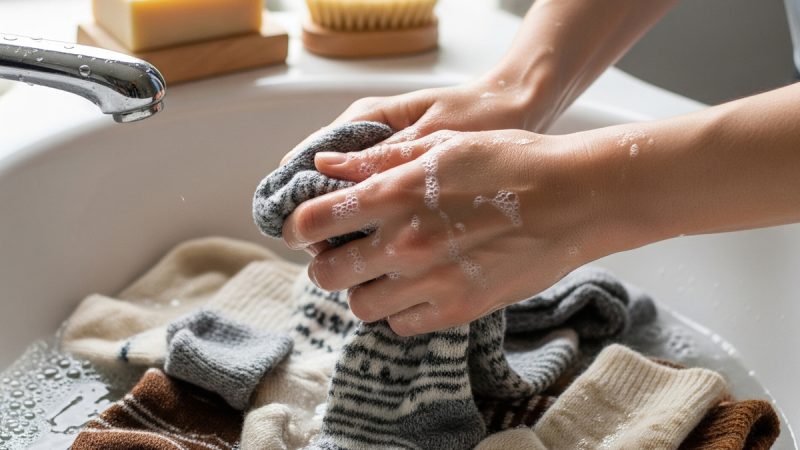
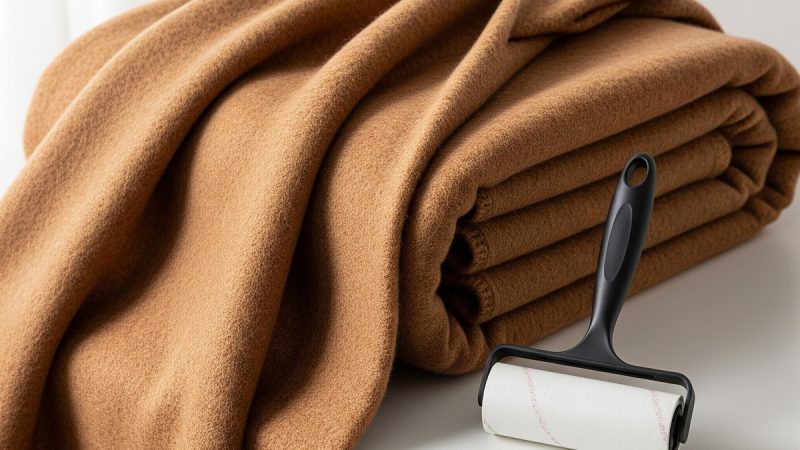
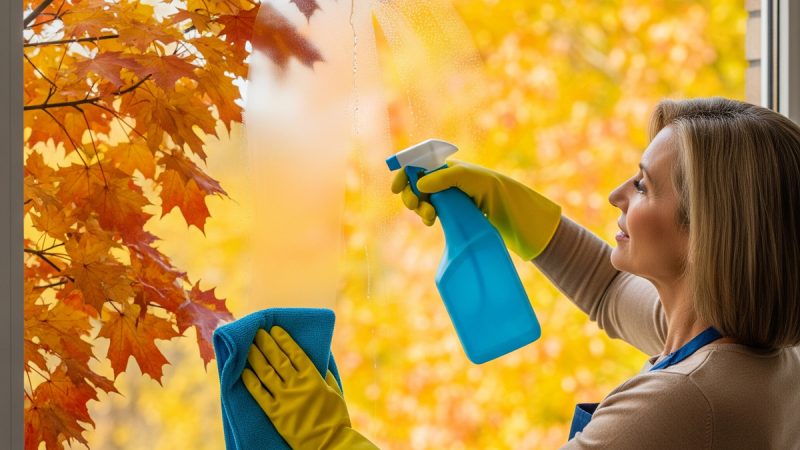

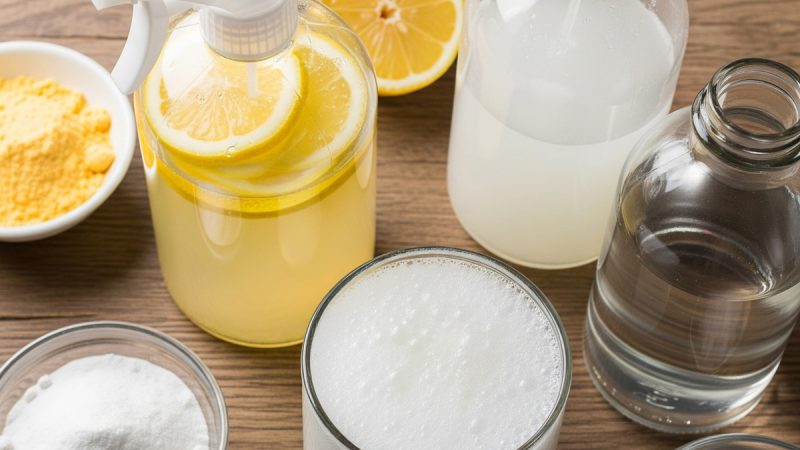
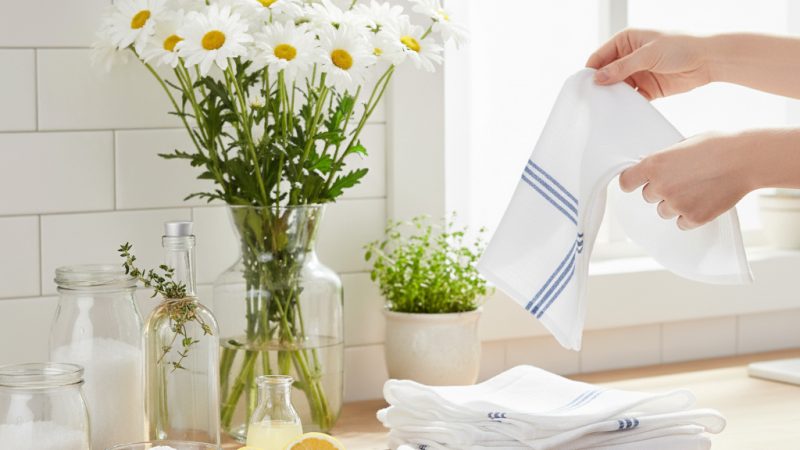

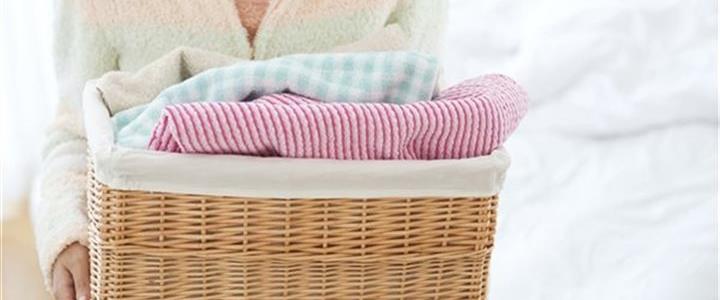
If you get black marks on your floors from high heels, just erase them! A plain pink eraser does the trick every time!
That’s a great tip, thanks for sharing.
Homemade Sweeping Cloths – Hi, I have purchased a swiffer sweeper and the dry sweeping cloths. The refills are costly since I have a cat and I use the sweeper every day. I found that if you use a rag instead of the dry sweeping cloths, they do the same thing and then you can put the rag in the washer and use them again. I have cut the rag the same size of the dry sweeping cloths and put them in the same holes that hold the sweeping cloths. I have even used them wet to mop up things that have spilled.
Great tip! Using a rag instead of expensive dry sweeping cloths is a smart way to save money and reduce waste. It’s great that you’ve found it works just as well and can be reused after washing. Thanks for sharing!
One day my husband had dragged in car oil on his shoes onto my carpet and as I was trying to take it off my niece came in for a short visit and she could see I was trying to get out that stain. After I told her this was the third cleaner I was using and nothing took it off she replied “Aunt Rita use some shaving cream”. I was amazed on the good job it did and after you rinse it out, it leaves a nice fresh smell. I have since (for many years now) told this to my friends, lots have used this and they just love it. One friend of mine had lots of oils stain in the motor home on her carpet, she said to me after she used the shaving cream “Rita you just saved my marriage from a divorce.” I swear its very good on all oil stain on the carpet.
That’s a great tip about using shaving cream to remove oil stains from carpets. It’s always helpful to have alternative cleaning solutions, especially for stubborn stains. It’s wonderful that you’ve been sharing this tip with your friends and have had such positive feedback. Thank you for sharing your experience!
To keep tile in the bathroom or kitchen looking clean and stick free, use pledge. Pledge keeps grease and others from sticking to your tile and in the bathroom, it keeps hairspray, urine, and dust from sticking to your tile. Pledge also keeps it shining like new.
Using Pledge to keep tile surfaces clean and stick-free is an interesting suggestion. It’s good to know that it can prevent grease, hairspray, urine, and dust from sticking and also maintain the shine. Thanks for sharing this tip for tile maintenance!
Cleaning Vinyl Floors – To get stains and ground in dirt off your vinyl floor, mix white vinegar and baking soda in your mop water. It fizzes a bit, but works great. For very stubborn stains (like rust) on your floor, pour white vinegar directly on the area, then sprinkle on baking soda. It should be thick, let it sit for about 5 minutes, then scrub with a little green scrubber. It takes up rust stains that have been there for years!
The vinegar and baking soda mixture for cleaning vinyl floors sounds like a great DIY solution for stains and dirt. It’s good to know that it works well, even for stubborn rust stains. Your recommendation to let the mixture sit and then scrub with a little green scrubber is very helpful. Thanks for sharing this effective cleaning method!
Oh wow! what a very nice article! I really like how you educate your readers regarding on how to clean our floors. Thanks for these tips. I will surely use this! Thanks a lot.
We’re glad you enjoyed the article and found the floor cleaning tips useful! It’s always our goal to educate and provide practical solutions for our readers. We hope these tips help you keep your floors clean and well-maintained. Thank you for your kind words!